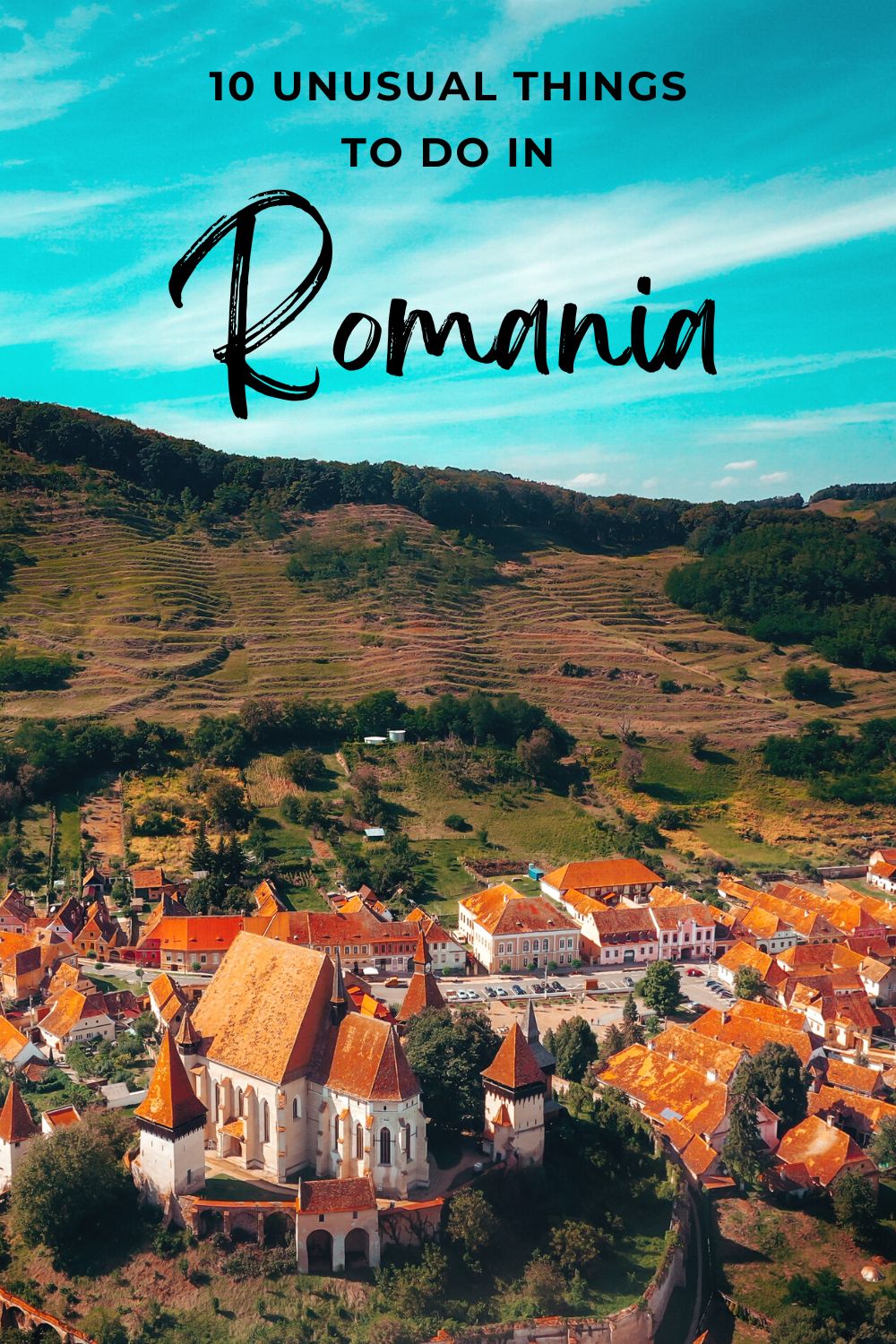10 Unusual Things To Do In Romania (A Local’s Guide!)
8 min readFrom mysterious castles to deep ravines, here are the most unusual things to do in Romania. This is a guest post by Marius Iliescu Romania is best known as the home of Dracula – and most visitors head straight for the mountains to see the count’s Bran Castle. Other traveler explore Romania’s natural beauty from the wild Carpathian Mountains to the cool Danube Delta. Or they dive into Transylvania’s traditional rural life (it’s why King Charles has three summer homes here!) But if you’re looking for hidden gems and fascinating sites off the beaten path, then Romania will definitely surprise you. I’m a Romanian travel writer and tour leader who’s been travelling across the country for decades. And this is my ultimate list of must-see Romanian gems that you shouldn’t miss! Ready to book your flight? Here are the top unusual things to do in Romania: 1. Corvin Castle Corvin Castle is one of the world’s most beautiful castles – though it doesn’t get nearly as much attention as Dracula’s iconic lair. Construction began in 1446. And even as it was being built, Corvin Castle became quickly recognized as one of the most impressive structures in Eastern Europe. It was a marvel of engineering for its sheer size and complexity of design. The castle served mainly as a defense fortress and boasts a fortified wall and circular and rectangular towers (used as prisons and weapons caches). These features were very innovative for their time and represented a new era of defense architecture. Tour inside the castle and marvel at these feats of engineering. Stroll through the castle halls, built in a rectangular layout and decorated with marble. And don’t miss the Knight’s Hall traditionally used for feasts and the Diet Hall where lavish formal ceremonies were once celebrated. And there’s also the Bear Pit which (as you can imagine) was used to punish unfortunate enemies. With its distinctive architecture, Corvin Castle served as a location for numerous films. 2. Timisoara Timisoara is one of Romania’s largest cities – and it’s a multicultural hub that’s home to 21 different ethnicities and 18 religions. It’s also the 2023 European Capital of Culture. Home to communities of Hungarians, Germans, Bulgarians, Croatians, Serbians and Italians, the city’s diverse background is woven into regional history. The city promotes European multiculturalism by inviting artists and creatives to contribute to its heritage. And that makes Timisoara the perfect destination for art lovers. With more than 150 artsy events slated this year, Timisoara is an ideal spot to explore Romania’s vibrant art scene. Start at Timisoara’s Banat Village Museum to learn more about the region’s rural culture and traditional homes. And don’t miss the Timisoara National Museum of Art nestled in a Baroque-style palace for European paintings, Orthodox icons and lavish interiors. Unwind at one of Timisoara’s many green spaces. Known as the city of parks, the city is home to many natural retreats that form a green belt along the Bega Canal. The Roses Park features a diverse mix of trees – and of course a wide array of roses, along with pergolas and a summer theater. The Civic Park has more than 1,000 shrubs and trees to admire, including magnolias, hydrangeas, lavender, azaleas and lilacs. Then head to the city’s vibrant historic district Fabric, which is undergoing a revival. The area was once known for manufacturing items like gunpowder, silk, tobacco and soap. Today it’s regaining its former glory. And it’s a great district for a walking tour with its Moorish synagogue, historic buildings and Serbian community. 3. Snagov Monastery (photos: fusion-of-horizons, CC BY 2.0, via Wikimedia Commons) Don’t miss this solitary island monastery that’s rumored to be the final resting place of Vlad the Impaler aka Dracula. Dating back to 1408, Snagov Monastery is a historical monument and a holy place with some brilliant medieval art. Nestled on a tiny island just outside Bucharest, the monastery includes the graveside of Vlad the Impaler, the medieval prince who inspired Bram Stoker’s famous novel Dracula. Throughout its history, the monastery was an important cultural nucleus. It minted Wallachian currency and hosted a printing press that created Romania’s first language books in the Latin alphabet. The monastery also served as a refuge for those escaping persecution because of its strategic position on a lake nestled within a dense forest. Don’t miss the beautiful long bridge that’s now a skyway connecting the island to the mainland. The monastery is a serene spot to experience some Dracula lore. 4. Sinca Veche Temple Cave (photo: Misiulica, CC BY-SA 3.0, via Wikimedia Commons) This intriguing temple cave is shrouded in mystery. Its original purpose – and who exactly built it – remains unknown to this day. The Sinca Veche Temple Cave dates back some 7,000 years. And it’s been home to numerous different religions – all who left their mark on its walls. The temple cave includes symbols like the Star of David and the Chinese yin-yang symbol. But surprisingly there are no crosses – despite a stone altar and evidence of historic Christian occupation. Light enters the cave through skylights. And historians say this feature allowed holy energy to symbolically flood the space. Some believe hidden tunnels connect the cave to nearby fortresses. But whatever its meaning, this temple cave is one of Romania’s lesser-known and most fascinating enigmas. 5. Red Ravine A natural wonder of unusual rock formations, the Red Ravine resembles the Grand Canyon with walls that rise up to 100 meters. And it’s every hiker’s dream. Rapa Rosie is a mix of badlands, tiered columns and pyramid-shaped rocks all separated by ravines. It was created over the course of 60 million years as water dug into the sandstone, gravel and quarts plateau. Its evolution is ongoing as rains morph the slope into different shapes even today. The ravine is home to some of the most massive caves in the world. It also boasts several endemic species of plants like nodding sage, rare white oaks, ferns and late carnations. Visit during the rainy season to see the water flow through the ravine and hear its hiss as it reaches the ground. Take a hike along the rustic landscape. Or try some paragliding in the summer for incredible views. And don’t miss the sunset when the red hills come alive with brilliant colors. 6. Bears’ Cave (photos: Fizped, CC BY 3.0, via Wikimedia Commons) Nestled in the western Apuseni Mountains, the Bears’ Cave has a collection of incredible cave bear skeletons still laying where they were first discovered. This incredible hidden gem was discovered in 1975 by a group of amateur speleologists. To their amazement, the group stumbled into the remains of 140 prehistoric cave bears – a species that became extinct some 28,000 years ago. Go inside the cave and explore three different galleries and four halls. The most remarkable is the Bones Gallery, which features a complete bear skeleton still embedded in stone. And don’t miss the cave’s impressive natural stalactites, or mineral formations that hang from the ceiling. 7. Romanian Kitsch Museum (photos courtesy Romanian Kitsch Museum) The Kitsch Museum is a must-see for a deep dive into Romania’s subcultures and communist past in Bucharest’s Old Town, the hotspot for Bucharest nighlife. From neon crucifixes and sequined champagne glasses to plastic alligators and garish wall tapestries, the museum is a crash course on Romanian symbols. The permanent exhibit features more than 200 artworks assembled over two decades that celebrate cheesiness and failed art forms. The museum has categories including Dracula, religious, interior design, modern and communist kitsch. Some items are controversial like the depictions of clerics standing alongside luxury cars. Make your own art in the Make Your Own Kitsch section if you’re feeling creative. And if you have anything as tacky as the museum exhibits , submit it to the Kitsch Art Gallery. 8. Flooded Villages The flooded villages of Bezidu Nou and Geamana (above) are haunting symbols of communist attempts to reshape the natural landscape at the expense of the environment. Bezidu Nou became submerged underwater by 1994 after an artificial reservoir was constructed nearby. The village remained submerged even after Ceausescu’s fall from power in 1989. The village was once multicultural with Roman and Greek Catholic, Unitarian and Sabbatarian residents. A memorial with the names of the former residents was erected in 1995 to commemorate their religious tolerance. Today only some 40 residents remain in the village, which has a main road that leads into the water. Only the edge of a church wall remains visible above the water. Geamana was once a lively village in a picturesque valley. But in the late 1970s, it was erased from the map to make room for a lake of toxic waste. When copper reserves were discovered nearby, the toxic waste from the mining was disposed of in the valley. Ceausescu ordered the village to evacuate and dumped the toxic sludge into the land, erasing everything except a single church steeple. 9. Viscri Fortified Church This 11th-century fortified church was built in the Middle Ages to protect surrounding villages. It was destroyed by the Tatars in the 13th century and rebuilt to include fortified elements to protect local residents. The outer walls – some 23 feet high – allowed the locals safe passage. In later and more peaceful centuries, rooms were added for classrooms and storage space. Today the citadel maintains much of its original look and is listed as a UNESCO world heritage site. Visit the church (considered one of the most beautiful in Transylvania), climb the church tower and don’t miss the small museum with exhibits on farming and local history. 10. Iulia Hasdeu Castle (photo: Constantin Barbu, CC BY 2.0, via Wikimedia Commons) This 19th-century castle was built by thinker Bogdan Petriceicu Hasdeu as a shrine for his daughter Iulia who died at 18 of tuberculosis. Hasdeu claimed his daughter gave him the exact plans and layout for the castle through spiritism from beyond her grave. And the story of this castle is full of loss, mystery and magic. Nestled in the small town of Campina, just 1.5 hours from Bucharest, this medieval-inspired castle is reportedly haunted. Some visitors claim they’d seen Iulia’s ghost roaming the castle grounds with a bouquet of daisies or heard her playing the piano. The site also made international news after a slew of nighttime security guards refused to work there because of strange occurrences and stories. Iulia was incredibly accomplished and graduated from primary school at 8 years old. Fluent in several languages, she enrolled at the Sorbonne University at 16 and went on to lecture while completing her doctoral thesis. Her death was crushing to her father, who built an altar for her at Bellu Cemetery. Many of the family’s personal belongings are now on display at the castle, including manuscripts, seance photos and other curiosities. Don’t miss the intriguing Museum of Spiritism inside the castle for a fascinating look at reincarnation and the paranormal. Conclusion There’s a lot more to Romania than Count Dracula’s iconic castle. Get off the beaten path and explore the country’s fascinating history, breathtaking landscapes and hidden gems. You’ll be surprised how much Romania has to offer. I would love to hear from you. Have you visited any of these Romanian hidden gems? About the author: Marius Iliescu is the founder of Romanian Friend, a one-stop website with travel inspiration, tour ideas and practical info to plan your Romanian getaway. His mission is to let people experience the best of his country while supporting responsible tourism that boosts local communities. Follow him on Facebook and Instagram. MORE RESOURCES 24 Practical Slow Travel Tips (And How To Slow Down) 32 Best Off The Beaten Path Travel Destinations Pin it:
The post 10 Unusual Things To Do In Romania (A Local’s Guide!) appeared first on Vanilla Papers.
From mysterious castles to deep ravines, here are the most unusual things to do in Romania.
This is a guest post by Marius Iliescu
Romania is best known as the home of Dracula – and most visitors head straight for the mountains to see the count’s Bran Castle.
Other traveler explore Romania’s natural beauty from the wild Carpathian Mountains to the cool Danube Delta. Or they dive into Transylvania’s traditional rural life (it’s why King Charles has three summer homes here!)
But if you’re looking for hidden gems and fascinating sites off the beaten path, then Romania will definitely surprise you.
I’m a Romanian travel writer and tour leader who’s been travelling across the country for decades. And this is my ultimate list of must-see Romanian gems that you shouldn’t miss!
Ready to book your flight?
Here are the top unusual things to do in Romania:
1. Corvin Castle
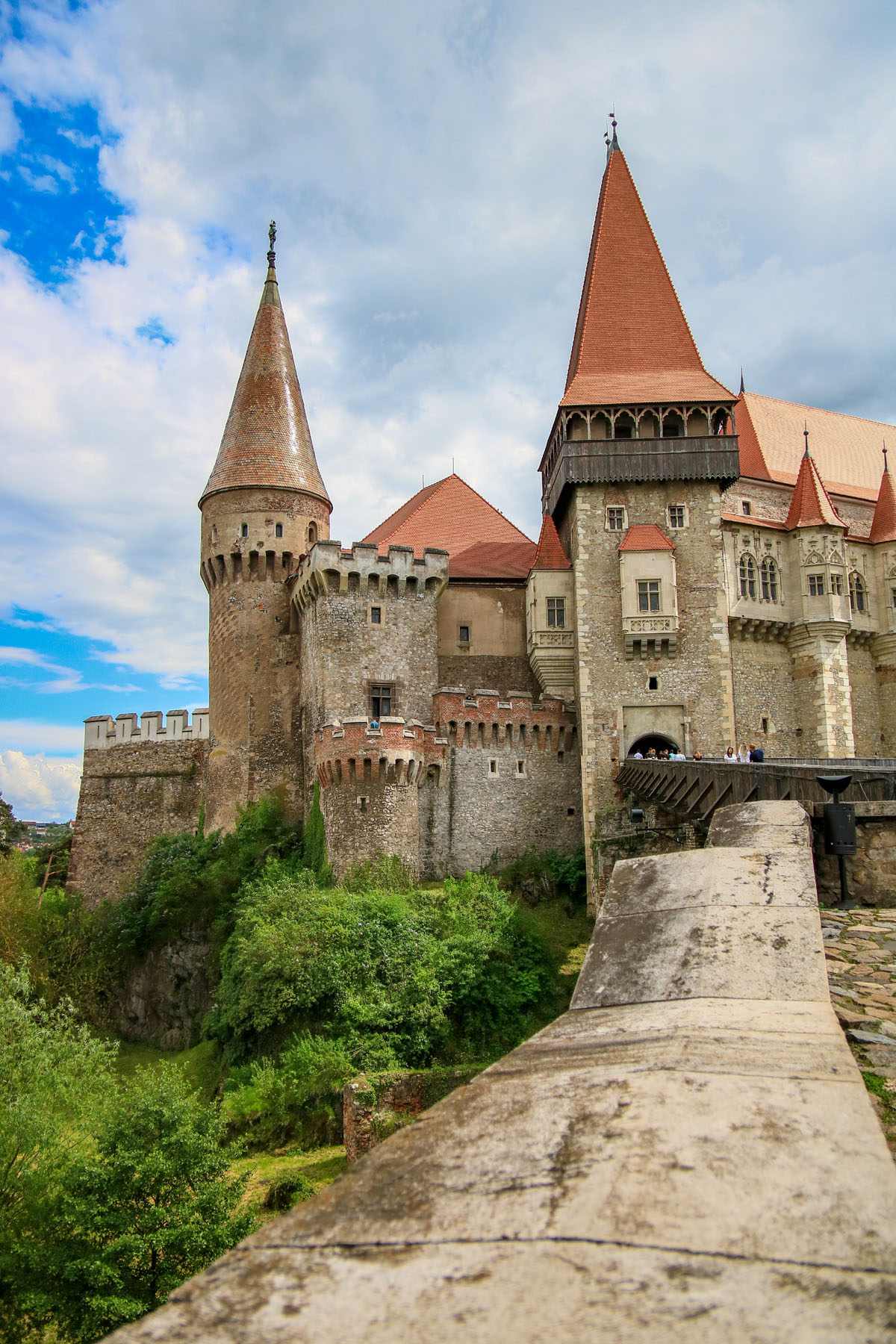

Corvin Castle is one of the world’s most beautiful castles – though it doesn’t get nearly as much attention as Dracula’s iconic lair.
Construction began in 1446. And even as it was being built, Corvin Castle became quickly recognized as one of the most impressive structures in Eastern Europe. It was a marvel of engineering for its sheer size and complexity of design.
The castle served mainly as a defense fortress and boasts a fortified wall and circular and rectangular towers (used as prisons and weapons caches).
These features were very innovative for their time and represented a new era of defense architecture.
Tour inside the castle and marvel at these feats of engineering.
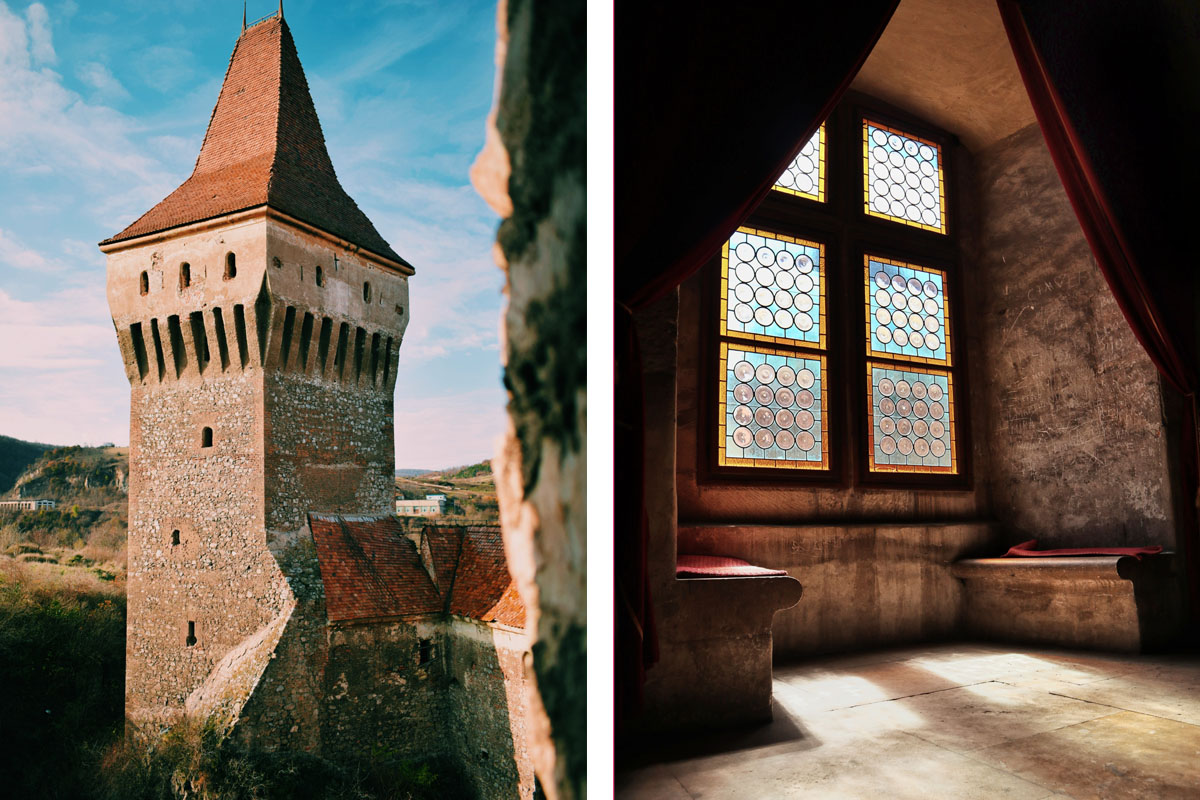

Stroll through the castle halls, built in a rectangular layout and decorated with marble. And don’t miss the Knight’s Hall traditionally used for feasts and the Diet Hall where lavish formal ceremonies were once celebrated.
And there’s also the Bear Pit which (as you can imagine) was used to punish unfortunate enemies.
With its distinctive architecture, Corvin Castle served as a location for numerous films.
2. Timisoara
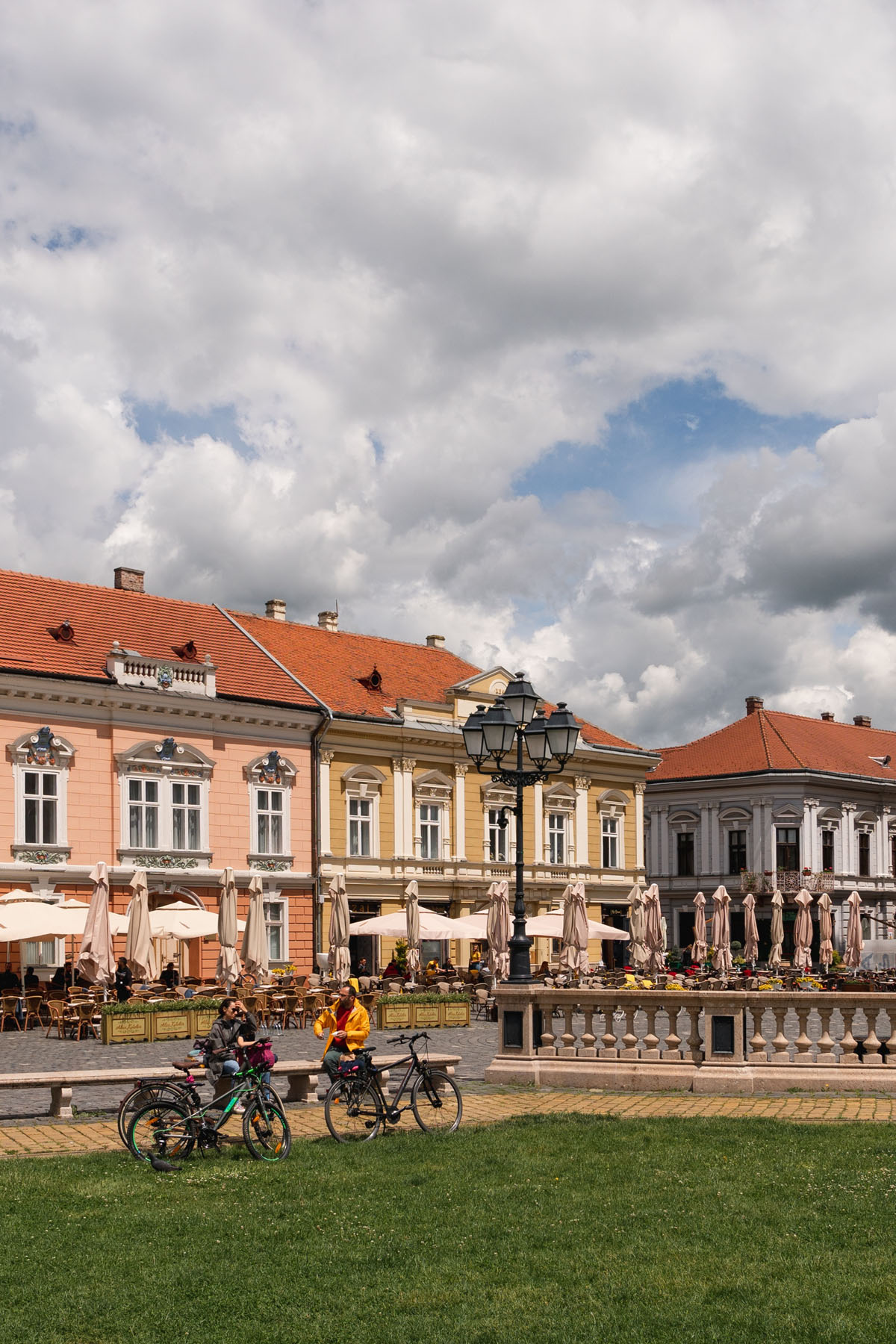

Timisoara is one of Romania’s largest cities – and it’s a multicultural hub that’s home to 21 different ethnicities and 18 religions.
It’s also the 2023 European Capital of Culture. Home to communities of Hungarians, Germans, Bulgarians, Croatians, Serbians and Italians, the city’s diverse background is woven into regional history.
The city promotes European multiculturalism by inviting artists and creatives to contribute to its heritage.
And that makes Timisoara the perfect destination for art lovers.
With more than 150 artsy events slated this year, Timisoara is an ideal spot to explore Romania’s vibrant art scene.
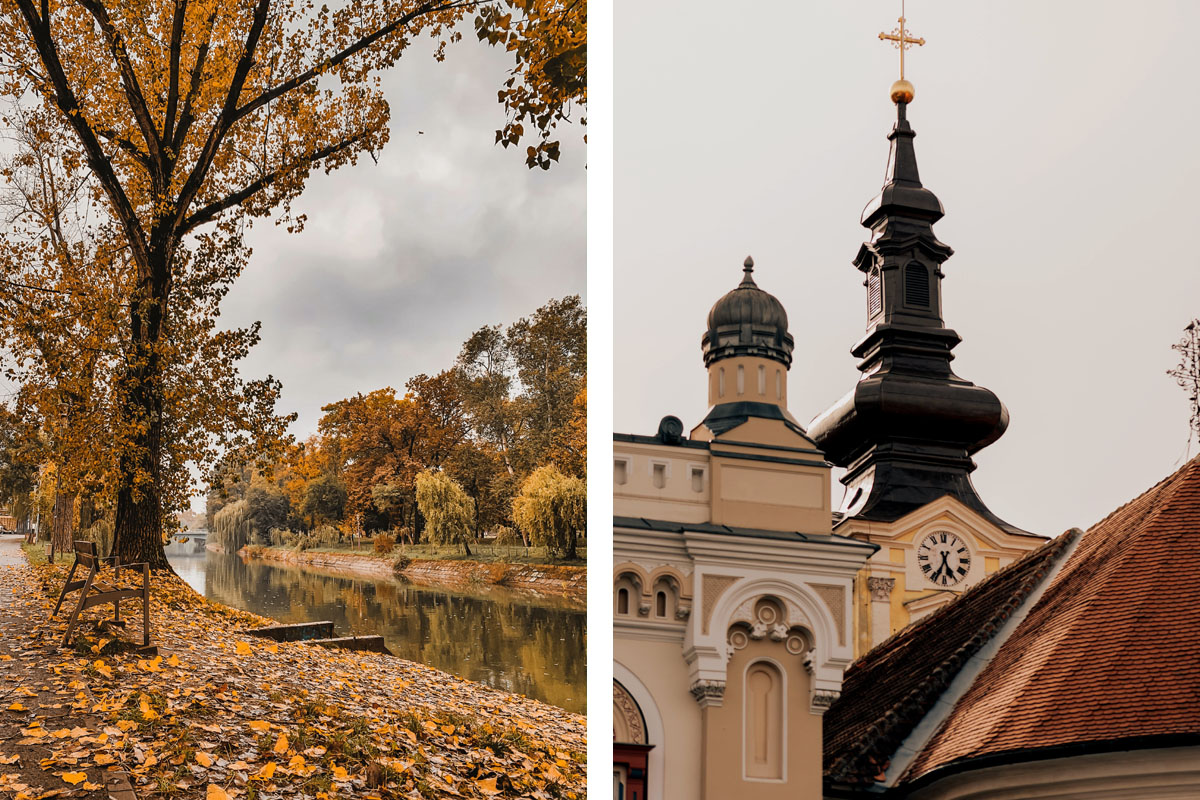

Start at Timisoara’s Banat Village Museum to learn more about the region’s rural culture and traditional homes. And don’t miss the Timisoara National Museum of Art nestled in a Baroque-style palace for European paintings, Orthodox icons and lavish interiors.
Unwind at one of Timisoara’s many green spaces. Known as the city of parks, the city is home to many natural retreats that form a green belt along the Bega Canal.
The Roses Park features a diverse mix of trees – and of course a wide array of roses, along with pergolas and a summer theater. The Civic Park has more than 1,000 shrubs and trees to admire, including magnolias, hydrangeas, lavender, azaleas and lilacs.
Then head to the city’s vibrant historic district Fabric, which is undergoing a revival. The area was once known for manufacturing items like gunpowder, silk, tobacco and soap. Today it’s regaining its former glory.
And it’s a great district for a walking tour with its Moorish synagogue, historic buildings and Serbian community.
3. Snagov Monastery
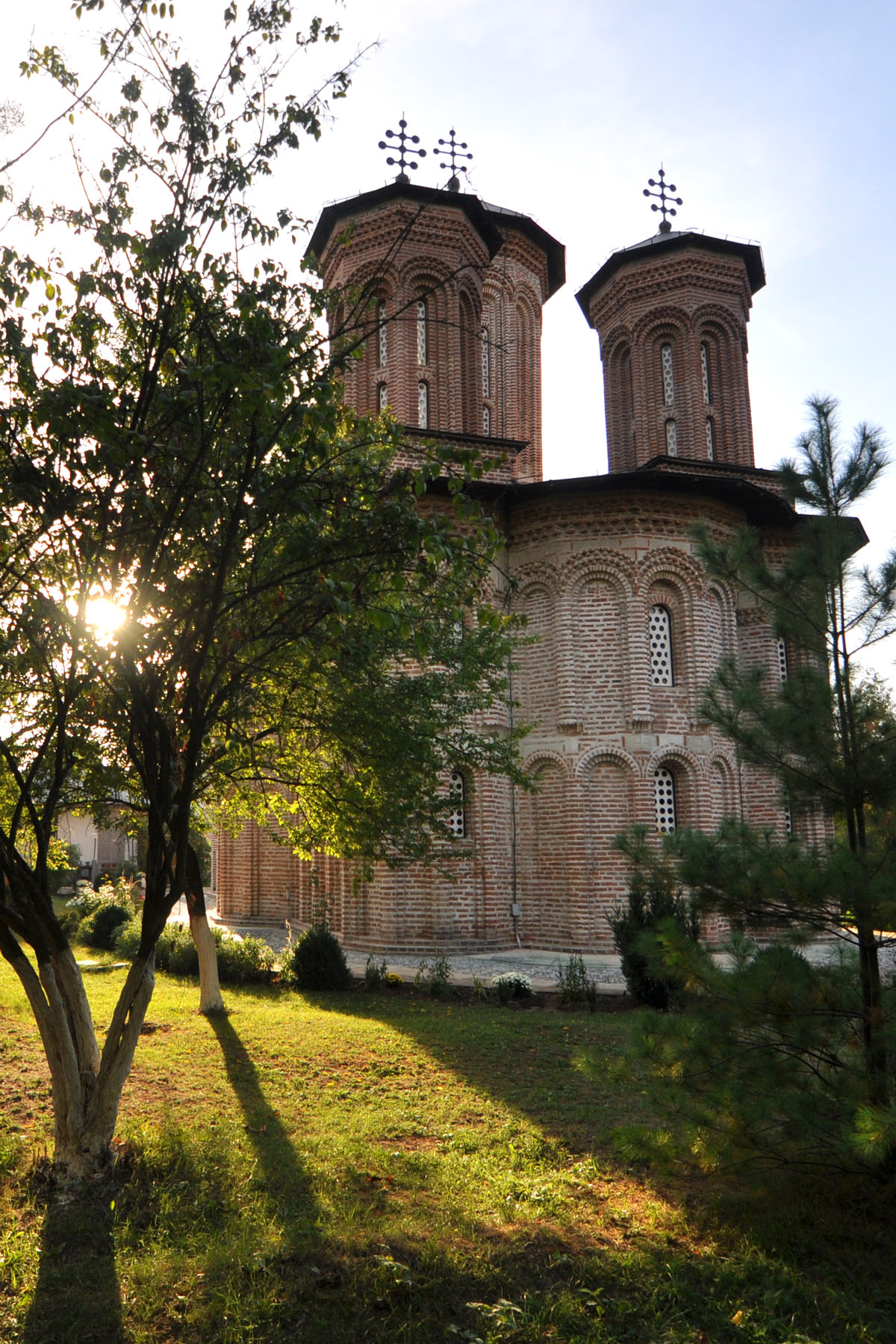

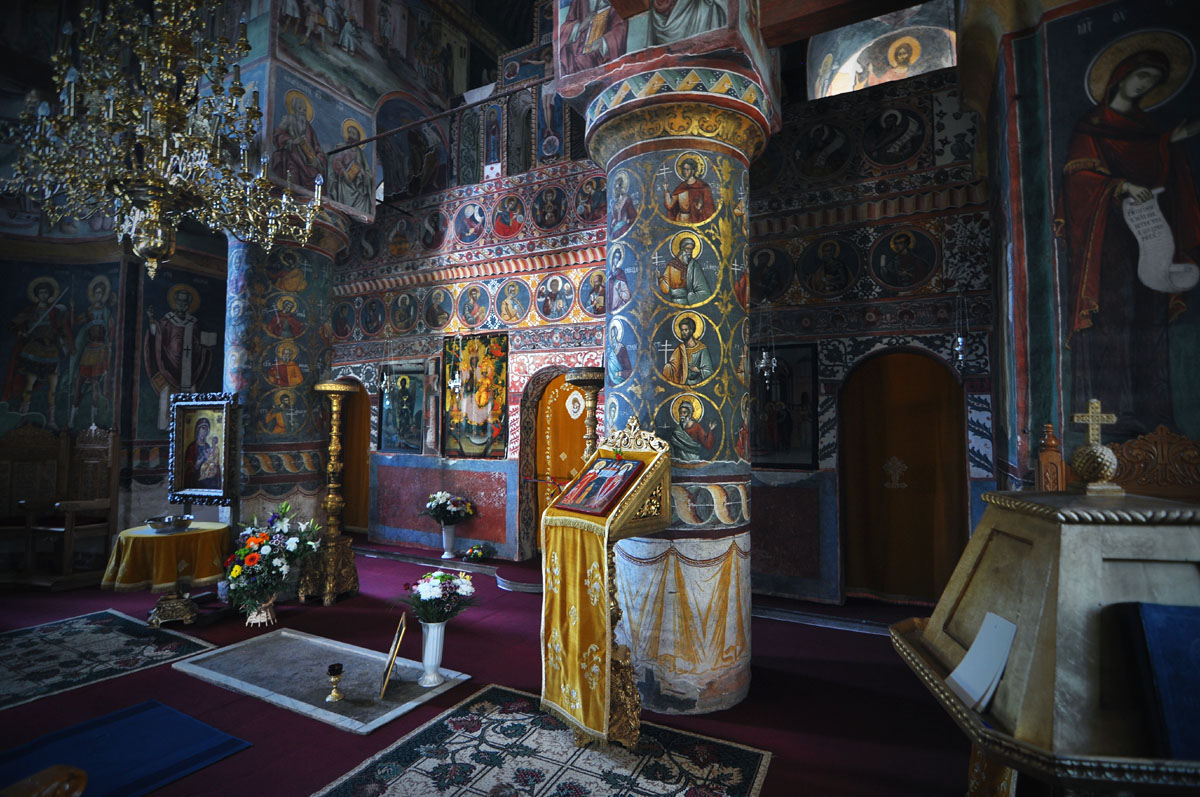

(photos: fusion-of-horizons, CC BY 2.0, via Wikimedia Commons)
Don’t miss this solitary island monastery that’s rumored to be the final resting place of Vlad the Impaler aka Dracula.
Dating back to 1408, Snagov Monastery is a historical monument and a holy place with some brilliant medieval art.
Nestled on a tiny island just outside Bucharest, the monastery includes the graveside of Vlad the Impaler, the medieval prince who inspired Bram Stoker’s famous novel Dracula.
Throughout its history, the monastery was an important cultural nucleus. It minted Wallachian currency and hosted a printing press that created Romania’s first language books in the Latin alphabet.
The monastery also served as a refuge for those escaping persecution because of its strategic position on a lake nestled within a dense forest.
Don’t miss the beautiful long bridge that’s now a skyway connecting the island to the mainland.
The monastery is a serene spot to experience some Dracula lore.
4. Sinca Veche Temple Cave
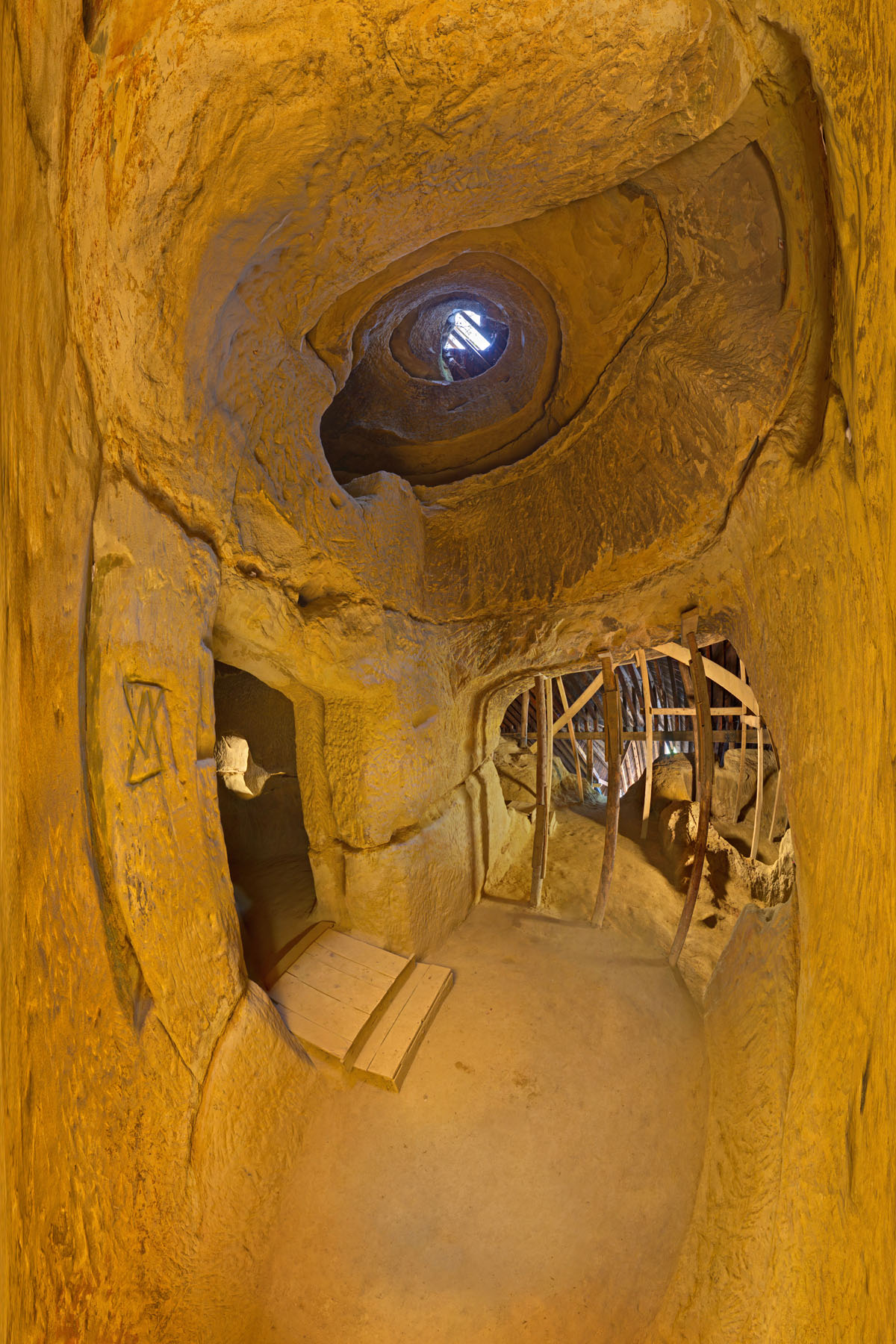

(photo: Misiulica, CC BY-SA 3.0, via Wikimedia Commons)
This intriguing temple cave is shrouded in mystery. Its original purpose – and who exactly built it – remains unknown to this day.
The Sinca Veche Temple Cave dates back some 7,000 years. And it’s been home to numerous different religions – all who left their mark on its walls.
The temple cave includes symbols like the Star of David and the Chinese yin-yang symbol. But surprisingly there are no crosses – despite a stone altar and evidence of historic Christian occupation.
Light enters the cave through skylights. And historians say this feature allowed holy energy to symbolically flood the space.
Some believe hidden tunnels connect the cave to nearby fortresses.
But whatever its meaning, this temple cave is one of Romania’s lesser-known and most fascinating enigmas.
5. Red Ravine
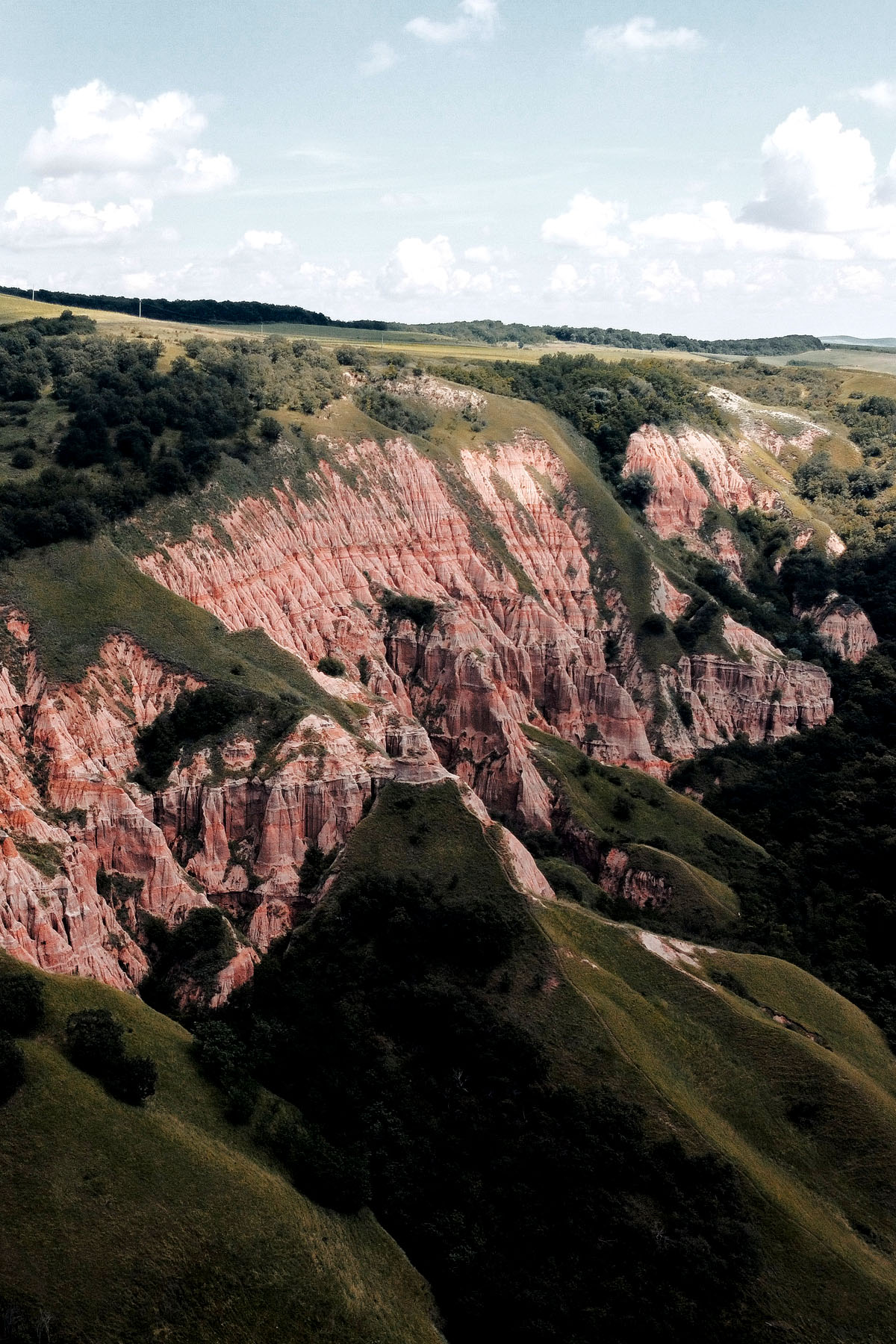

A natural wonder of unusual rock formations, the Red Ravine resembles the Grand Canyon with walls that rise up to 100 meters. And it’s every hiker’s dream.
Rapa Rosie is a mix of badlands, tiered columns and pyramid-shaped rocks all separated by ravines.
It was created over the course of 60 million years as water dug into the sandstone, gravel and quarts plateau.
Its evolution is ongoing as rains morph the slope into different shapes even today.
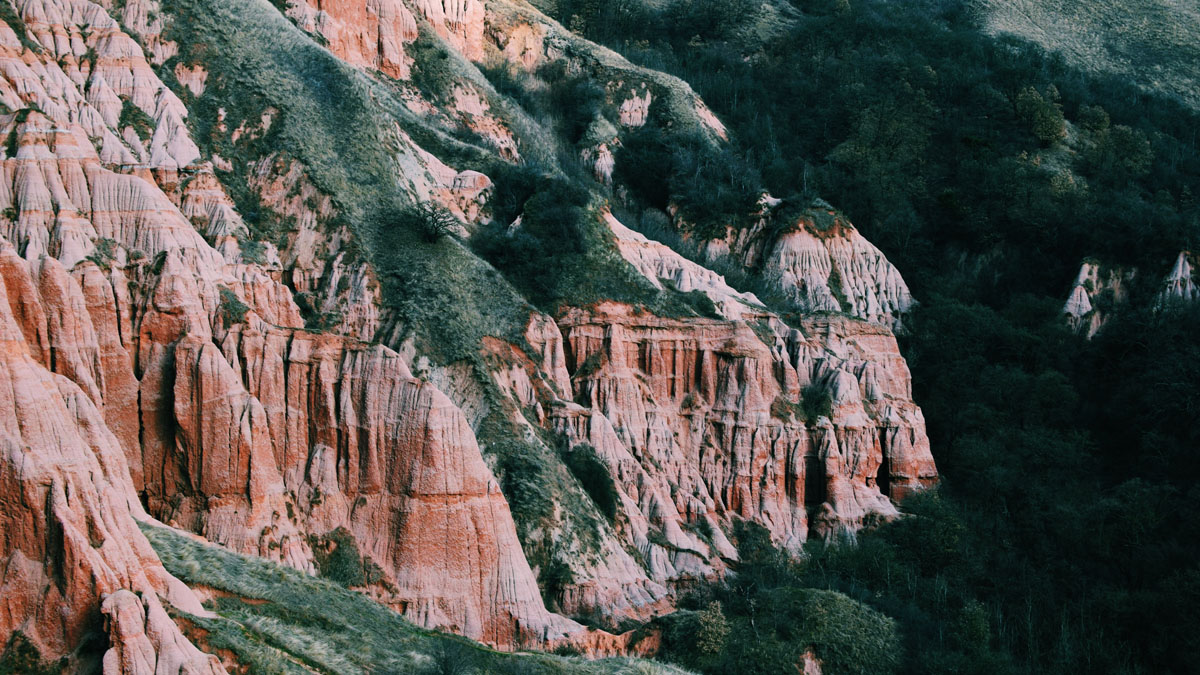

The ravine is home to some of the most massive caves in the world. It also boasts several endemic species of plants like nodding sage, rare white oaks, ferns and late carnations.
Visit during the rainy season to see the water flow through the ravine and hear its hiss as it reaches the ground.
Take a hike along the rustic landscape. Or try some paragliding in the summer for incredible views. And don’t miss the sunset when the red hills come alive with brilliant colors.
6. Bears’ Cave
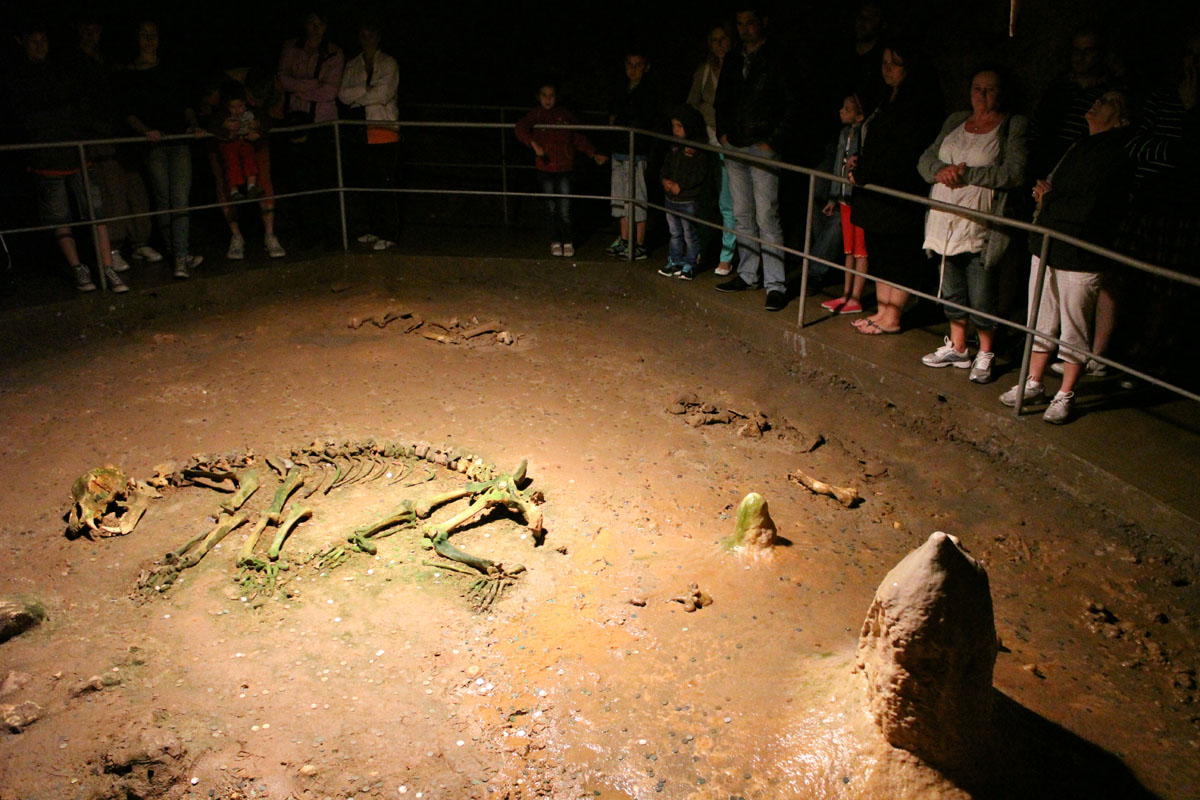

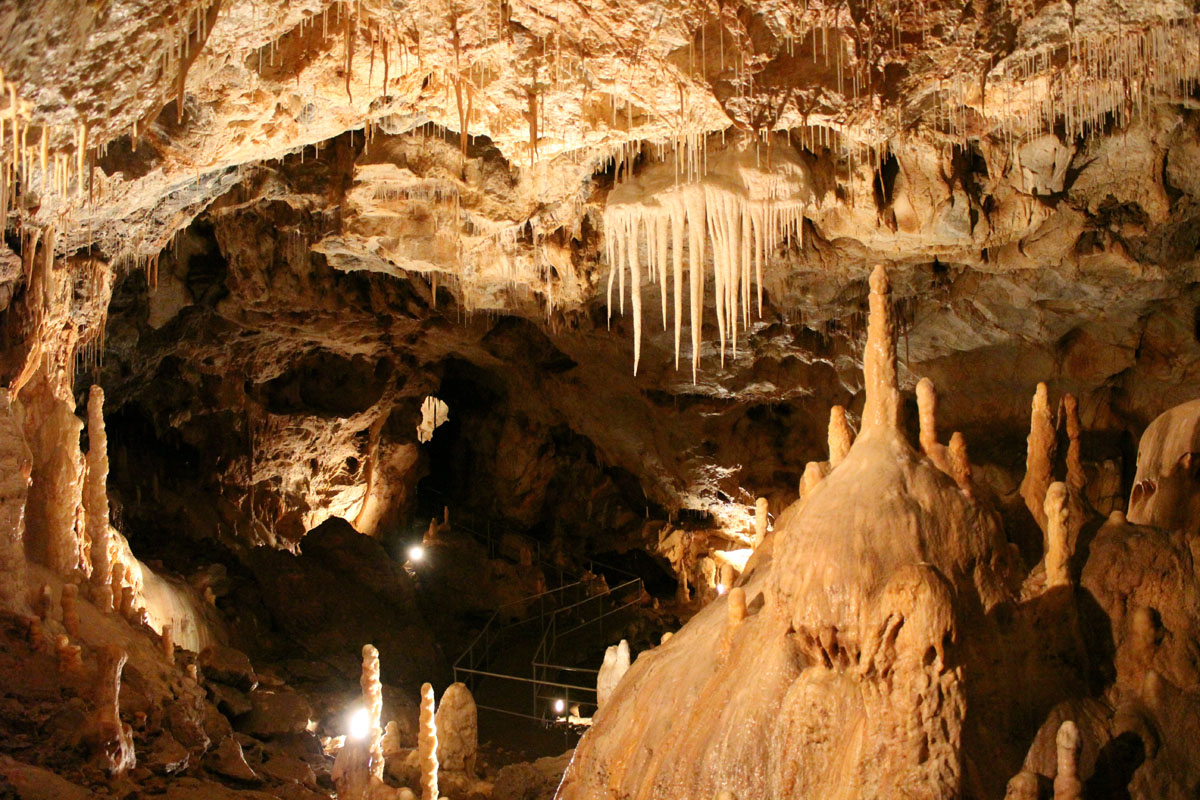

(photos: Fizped, CC BY 3.0, via Wikimedia Commons)
Nestled in the western Apuseni Mountains, the Bears’ Cave has a collection of incredible cave bear skeletons still laying where they were first discovered.
This incredible hidden gem was discovered in 1975 by a group of amateur speleologists.
To their amazement, the group stumbled into the remains of 140 prehistoric cave bears – a species that became extinct some 28,000 years ago.
Go inside the cave and explore three different galleries and four halls. The most remarkable is the Bones Gallery, which features a complete bear skeleton still embedded in stone.
And don’t miss the cave’s impressive natural stalactites, or mineral formations that hang from the ceiling.
7. Romanian Kitsch Museum
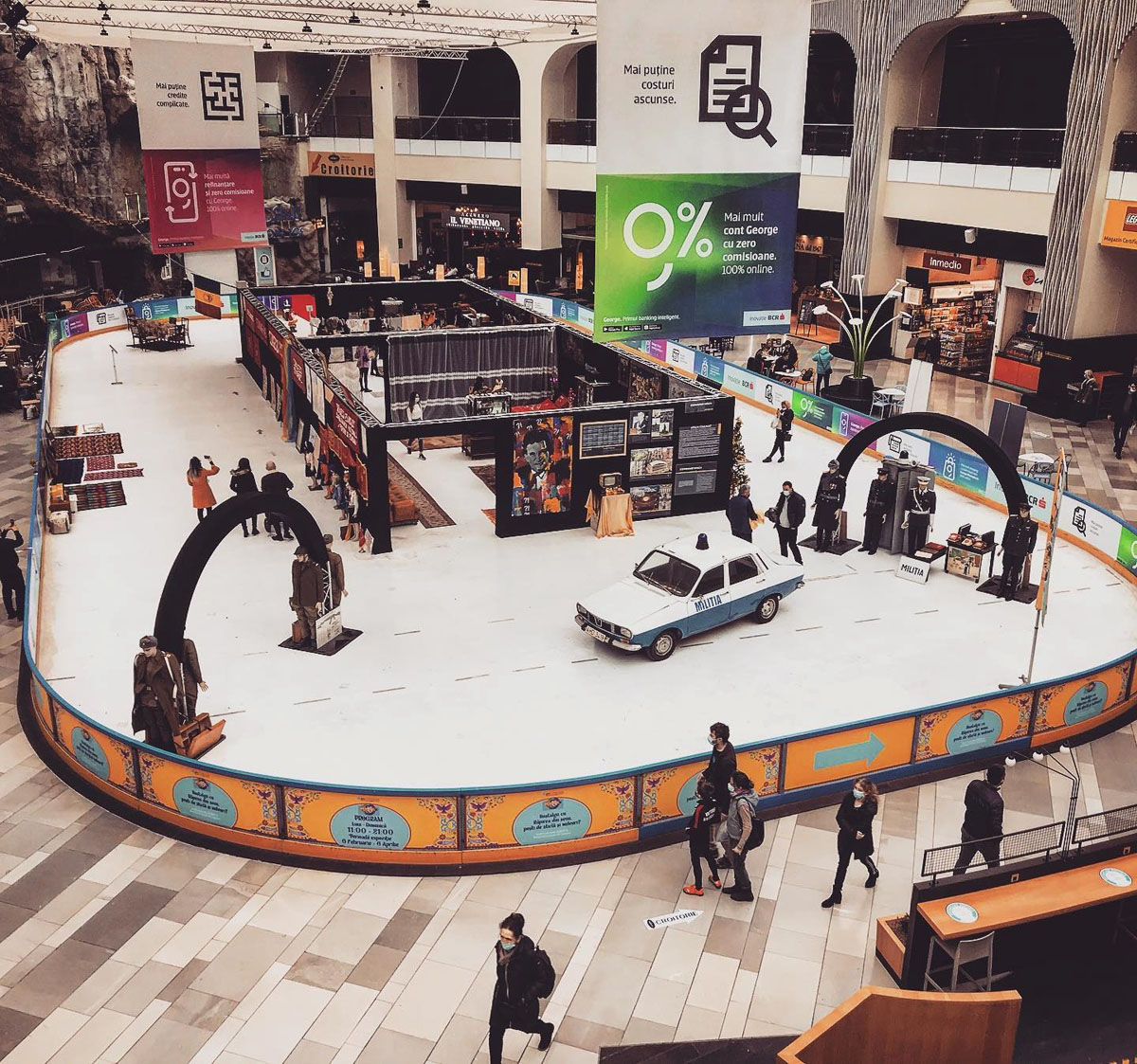

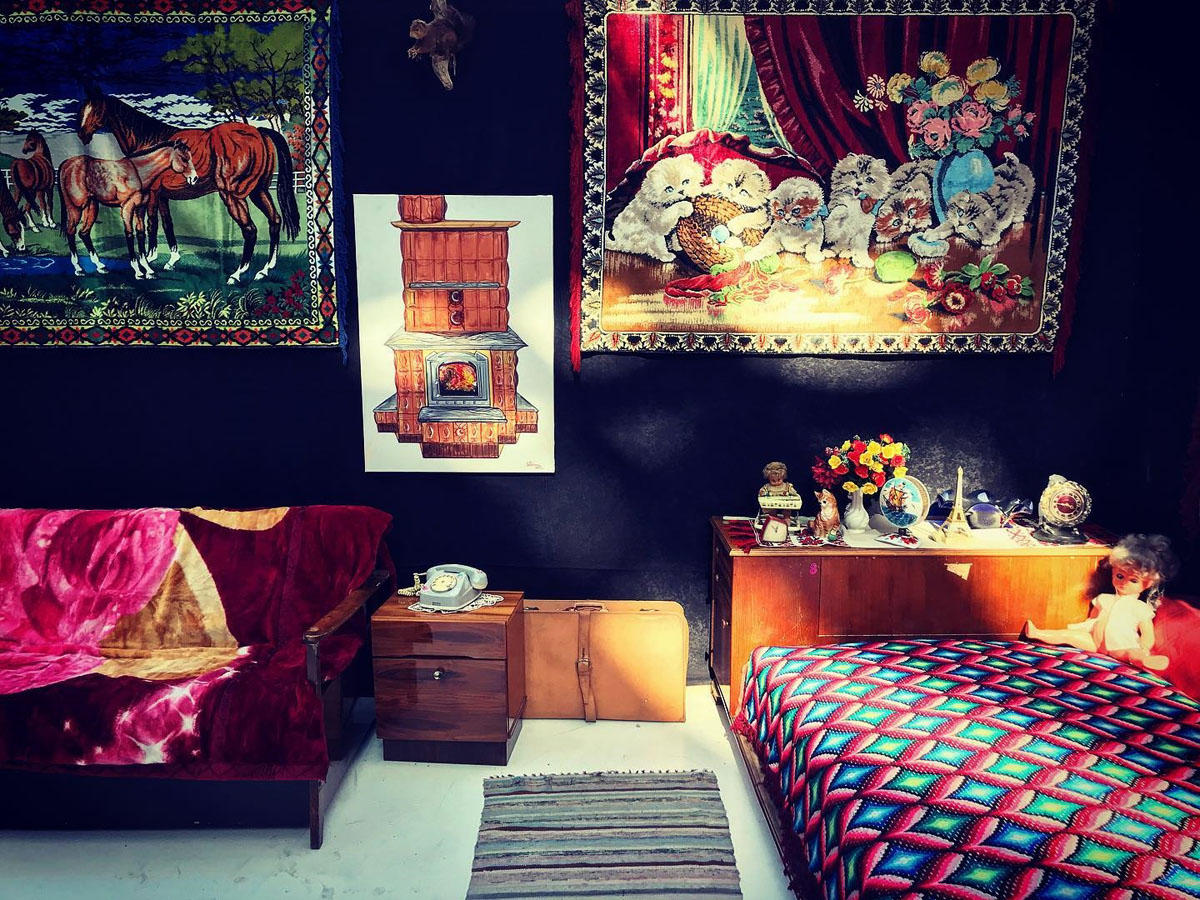

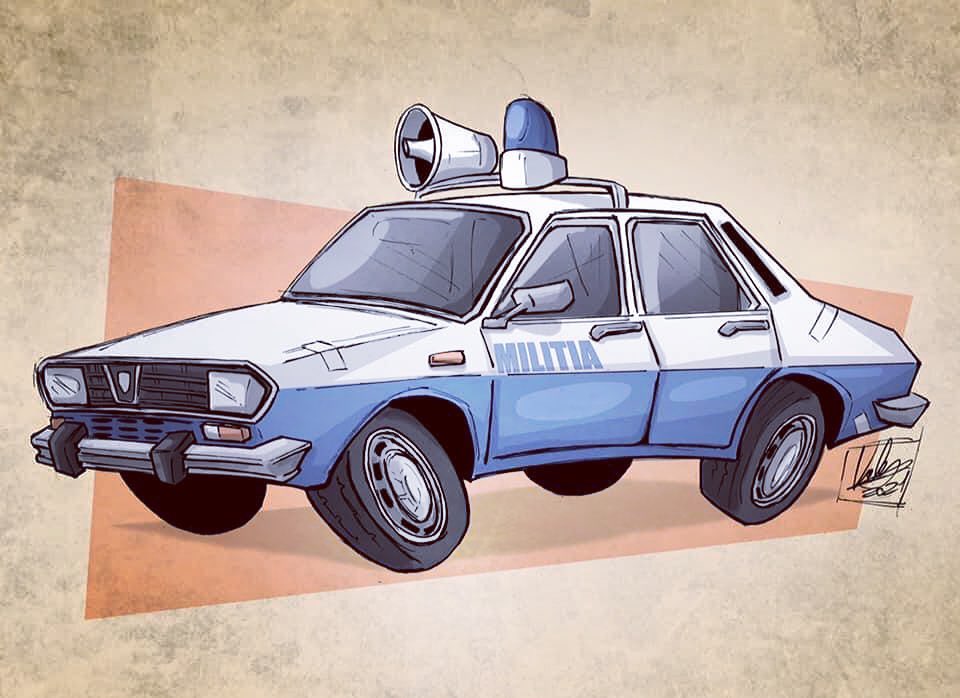

(photos courtesy Romanian Kitsch Museum)
The Kitsch Museum is a must-see for a deep dive into Romania’s subcultures and communist past in Bucharest’s Old Town, the hotspot for Bucharest nighlife.
From neon crucifixes and sequined champagne glasses to plastic alligators and garish wall tapestries, the museum is a crash course on Romanian symbols.
The permanent exhibit features more than 200 artworks assembled over two decades that celebrate cheesiness and failed art forms.
The museum has categories including Dracula, religious, interior design, modern and communist kitsch. Some items are controversial like the depictions of clerics standing alongside luxury cars.
Make your own art in the Make Your Own Kitsch section if you’re feeling creative. And if you have anything as tacky as the museum exhibits , submit it to the Kitsch Art Gallery.
8. Flooded Villages
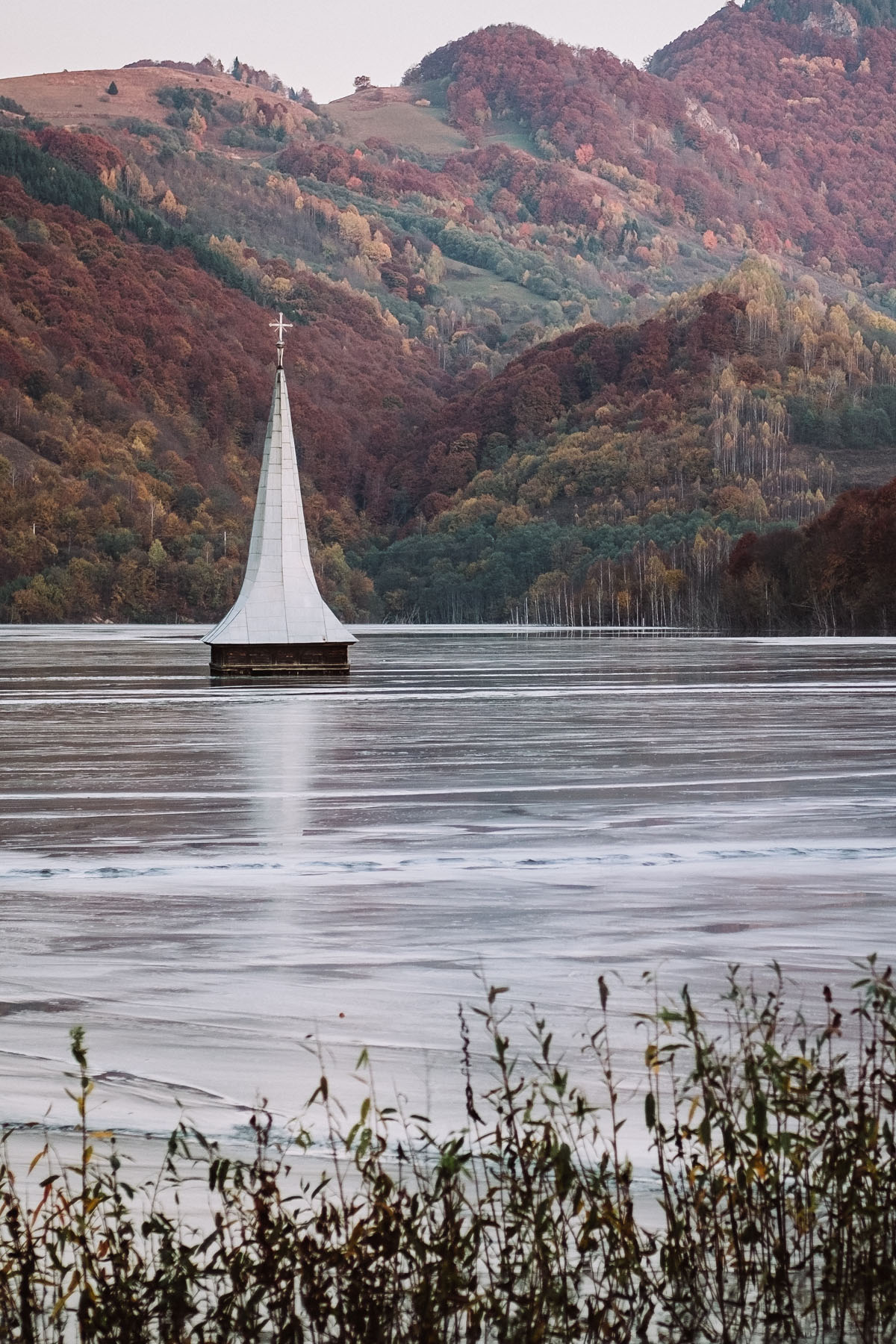

The flooded villages of Bezidu Nou and Geamana (above) are haunting symbols of communist attempts to reshape the natural landscape at the expense of the environment.
Bezidu Nou became submerged underwater by 1994 after an artificial reservoir was constructed nearby. The village remained submerged even after Ceausescu’s fall from power in 1989.
The village was once multicultural with Roman and Greek Catholic, Unitarian and Sabbatarian residents. A memorial with the names of the former residents was erected in 1995 to commemorate their religious tolerance.
Today only some 40 residents remain in the village, which has a main road that leads into the water. Only the edge of a church wall remains visible above the water.
Geamana was once a lively village in a picturesque valley. But in the late 1970s, it was erased from the map to make room for a lake of toxic waste.
When copper reserves were discovered nearby, the toxic waste from the mining was disposed of in the valley. Ceausescu ordered the village to evacuate and dumped the toxic sludge into the land, erasing everything except a single church steeple.
9. Viscri Fortified Church
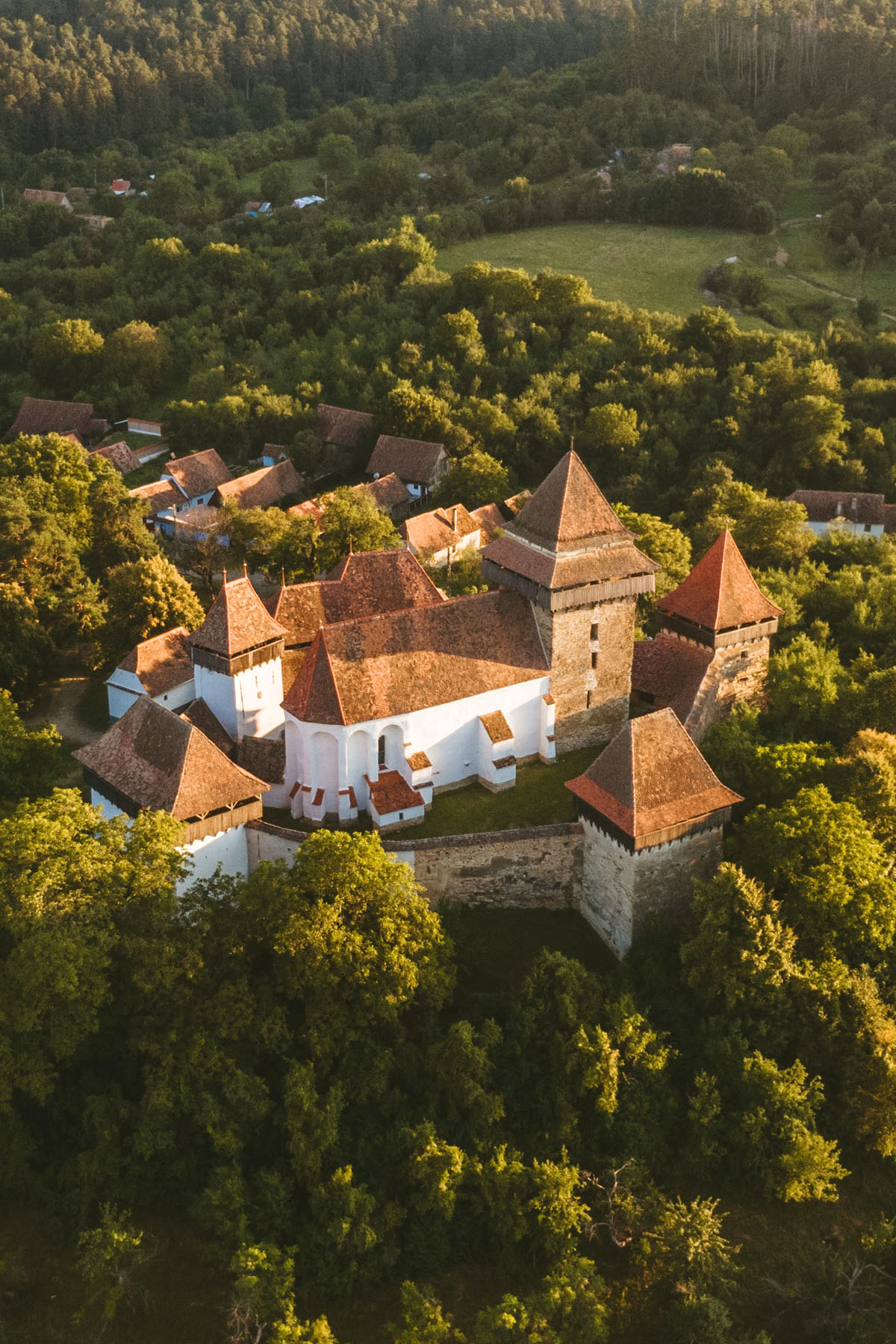

This 11th-century fortified church was built in the Middle Ages to protect surrounding villages.
It was destroyed by the Tatars in the 13th century and rebuilt to include fortified elements to protect local residents. The outer walls – some 23 feet high – allowed the locals safe passage.
In later and more peaceful centuries, rooms were added for classrooms and storage space.
Today the citadel maintains much of its original look and is listed as a UNESCO world heritage site.
Visit the church (considered one of the most beautiful in Transylvania), climb the church tower and don’t miss the small museum with exhibits on farming and local history.
10. Iulia Hasdeu Castle
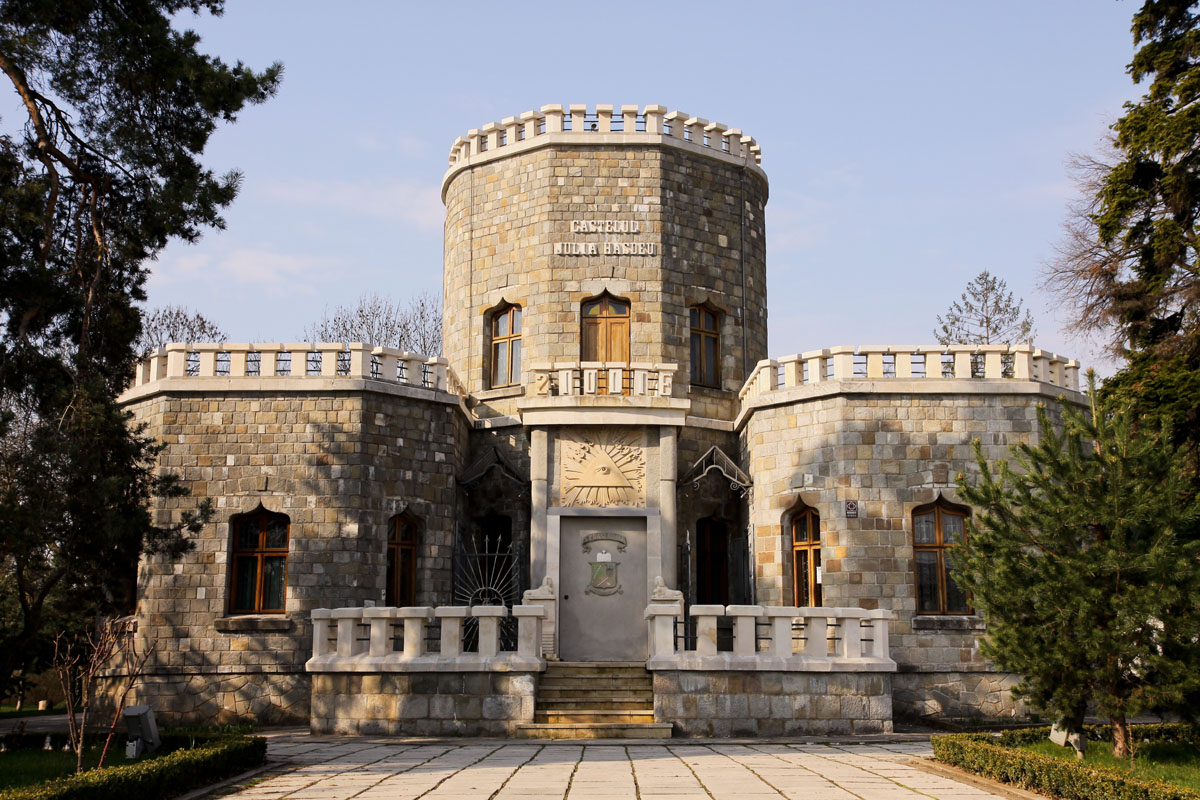

(photo: Constantin Barbu, CC BY 2.0, via Wikimedia Commons)
This 19th-century castle was built by thinker Bogdan Petriceicu Hasdeu as a shrine for his daughter Iulia who died at 18 of tuberculosis.
Hasdeu claimed his daughter gave him the exact plans and layout for the castle through spiritism from beyond her grave.
And the story of this castle is full of loss, mystery and magic.
Nestled in the small town of Campina, just 1.5 hours from Bucharest, this medieval-inspired castle is reportedly haunted. Some visitors claim they’d seen Iulia’s ghost roaming the castle grounds with a bouquet of daisies or heard her playing the piano.
The site also made international news after a slew of nighttime security guards refused to work there because of strange occurrences and stories.
Iulia was incredibly accomplished and graduated from primary school at 8 years old. Fluent in several languages, she enrolled at the Sorbonne University at 16 and went on to lecture while completing her doctoral thesis.
Her death was crushing to her father, who built an altar for her at Bellu Cemetery.
Many of the family’s personal belongings are now on display at the castle, including manuscripts, seance photos and other curiosities.
Don’t miss the intriguing Museum of Spiritism inside the castle for a fascinating look at reincarnation and the paranormal.
Conclusion
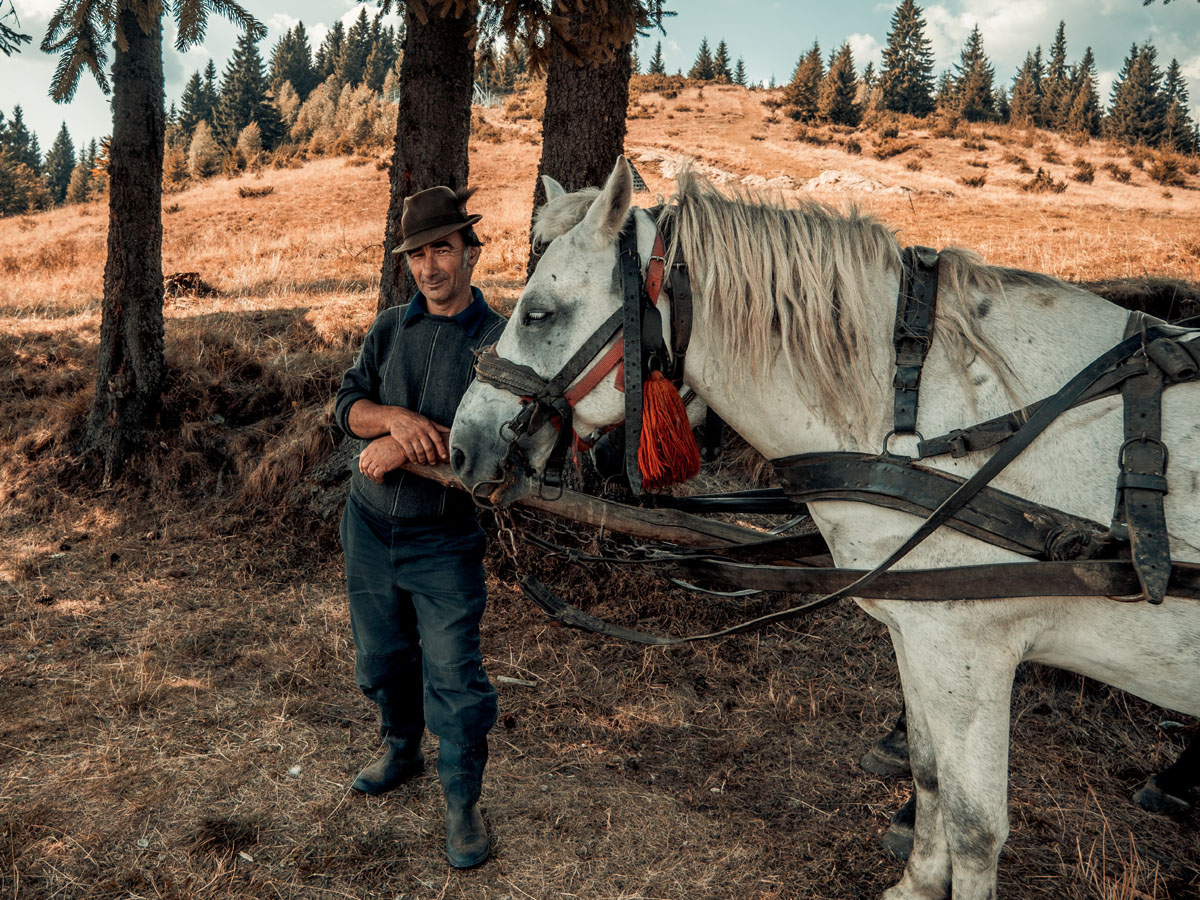

There’s a lot more to Romania than Count Dracula’s iconic castle.
Get off the beaten path and explore the country’s fascinating history, breathtaking landscapes and hidden gems.
You’ll be surprised how much Romania has to offer.
I would love to hear from you. Have you visited any of these Romanian hidden gems?
About the author:
Marius Iliescu is the founder of Romanian Friend, a one-stop website with travel inspiration, tour ideas and practical info to plan your Romanian getaway. His mission is to let people experience the best of his country while supporting responsible tourism that boosts local communities. Follow him on Facebook and Instagram.
MORE RESOURCES
24 Practical Slow Travel Tips (And How To Slow Down)
32 Best Off The Beaten Path Travel Destinations
Pin it:
